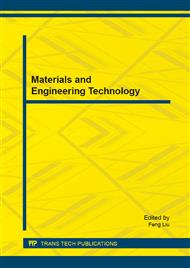p.561
p.567
p.573
p.580
p.584
p.590
p.596
p.603
p.611
Induction Motor Protection System Based on Fuzzy Logic
Abstract:
The protection is very important to detect abnormal motor running conditions such as over current, over voltage, overload, over temperature, and so on. When a failure is sensed by the protection system, a time delay should be specified to trip the motor. In the classical systems, motors are stopped with the time delay, which is adjusted constantly without considering the fault level. This paper presents a fuzzy logic-based protection system covering six different fault parameters for induction motors. The paper focuses on a new time-delay calculation for stopping induction motor and improves the overall detection performance. The time delay is computed by fuzzy logic method according to various fault parameters when one of the failures occurs on the motor. This system is successfully tested in real-time faults on the motor, and it shows that it provides sensitive protection by fuzzy rules.
Info:
Periodical:
Pages:
584-589
Citation:
Online since:
January 2015
Authors:
Keywords:
Price:
Сopyright:
© 2015 Trans Tech Publications Ltd. All Rights Reserved
Share:
Citation:


